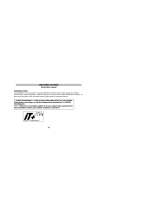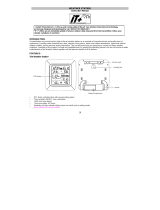
SETTING UP:
Note:
This weather station receives only one outdoor transmitter.
1. First, insert the batteries into the temperature transmitter. (see “Install and replace
batteries in the temperature transmitter“).
2. Within 30 seconds, insert the batteries into weather station (see “Install and replace
batteries in the weather station”). Once the batteries are in place, all segments of
the LCD will light up briefly. Then the time (default 0:00) and the weather icon will be
displayed. If these are not displayed after 60 seconds, remove the batteries and wait
for at least 60 seconds before reinserting them.
3. After inserting the batteries, the weather station will start receiving data from the
transmitter. The outdoor temperature and the signal reception icon should then be
displayed on the weather station. If this does not happen after 3 minutes, the batteries
will need to be removed from both units and reset from step 1.
4. In order to ensure successful 868 MHz transmission, this should under good conditions
be a distance no more than 100 meters between the final position of the weather
station and the transmitter (see notes on “Mounting” and “868 MHz Reception”).
5. Once the remote temperature has been received and displayed on the weather station,
the DCF time (radio controlled time) code reception is automatically started. This takes
typically between 3-5 minutes in good conditions.






















